Shoshone Geyser Basin, North Group - page 2
Page 1 2
The most important geysers of North Group are located in center. Terracette Spring (SNGNN010), 10 m east of SNGNN008, is closely related to nearby Bead Geyser. Eruptions of Terracette are known, but only during dormant periods of Bead. When Bead Geyser is active, Terracette responds to it with a rising or falling water level. On our visit we didn't see Bead Geyser erupting. Currently it does (or should do?) so every 1 - 2 hours and reaches up to 7 m (25 feet). The fresh condition of Bead's geyserite hints that it is still active. During its quiet interval its vent is no more than a small, dry opening in the sinter shield.
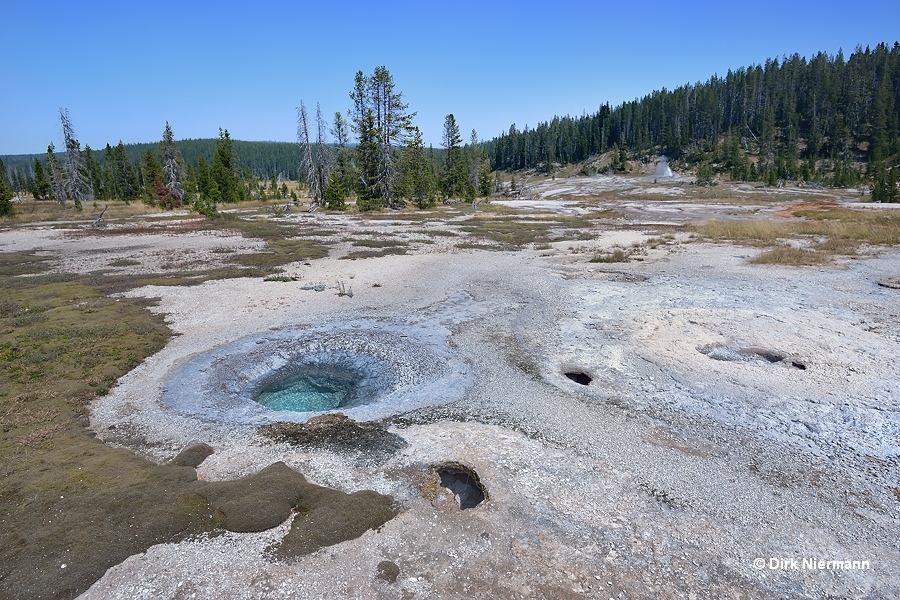
Approximately 15 m (50 feet) southeast of Bead Geyser the nearly rectangular, richly ornamented geyserite bowl of Knobby Geyser shows up. Knobby's major eruptions may rise up to 10 m (33 feet), but they are rare. We watched a series of minors around 1 m height and 15 minutes apart from each other. The low power possibly is a tribute to Velvet's activity.
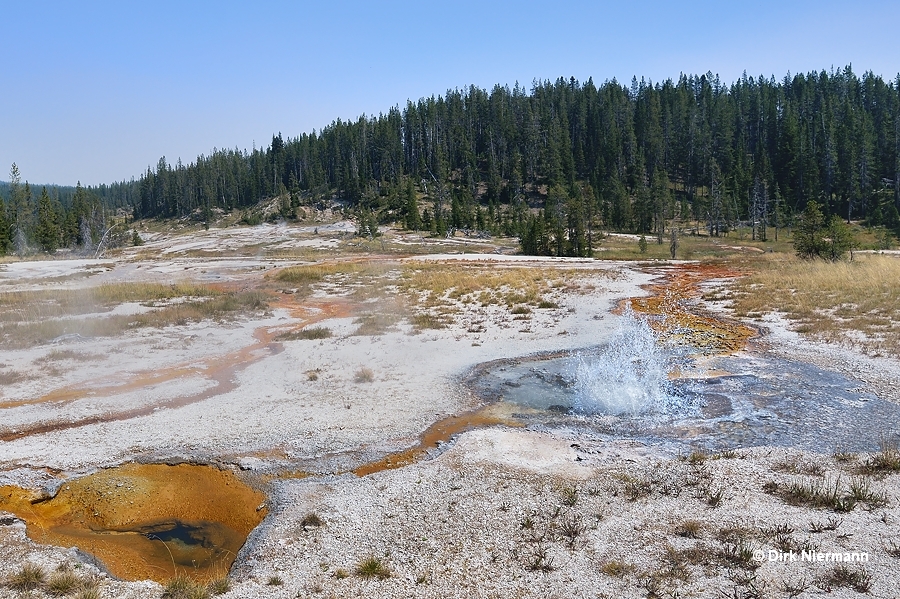
Frill Spring, 20 m northeast of Knobby Geyser, doesn't quite reach the maximum eruption height of Knobby, but its voluminous jets up to 6 m (20 feet) are scarcely less impressive. The major eruptions of Frill we observed consisted of three or four rapidly successive bursts of increasing strength followed by the same number with decreasing power, all within a time span of 10 - 15 seconds. They were prefigured by periodical rising of the water level and draining after a minor eruption of a few feet height. Several such periods were needed to trigger the major eruption. Between Frill's active phases, which are lasting around 9 hours, it is pausing 4 - 6 days. The blue spring beyond Frill in the underlying photo is Pearl Spring, the other one far left is Grotto Spring.
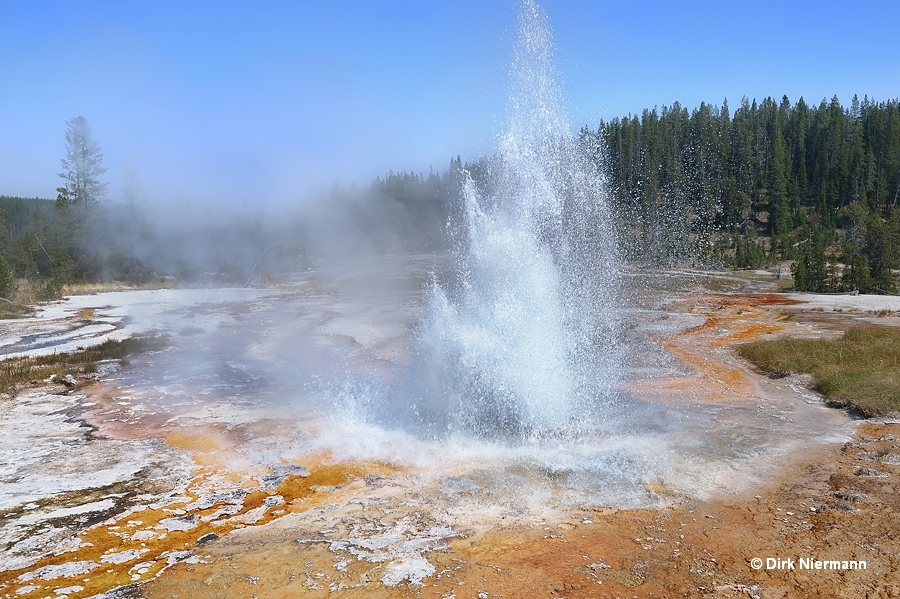
A closer look at Pearl Spring beyond Frill reveals a slight splashing.
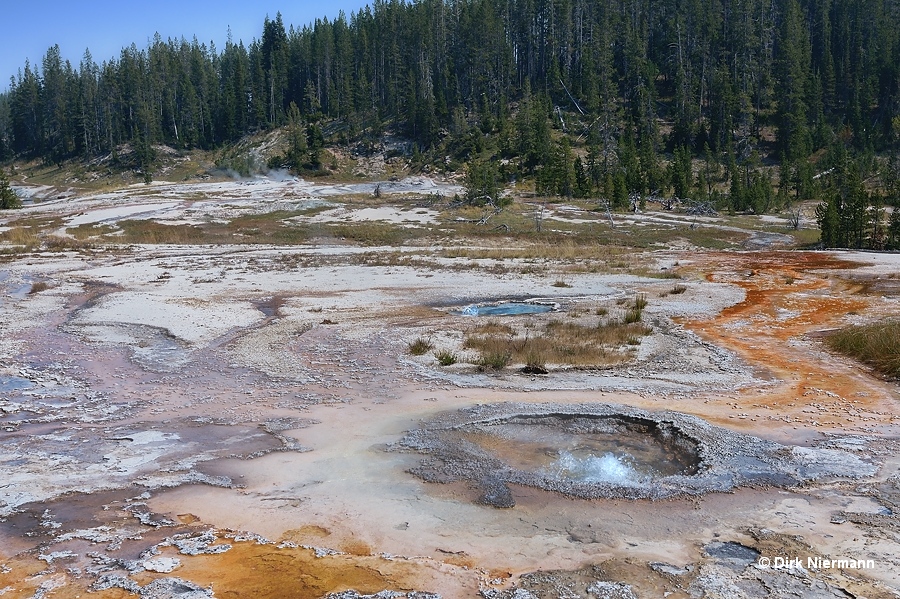
As if there were not enough spectacular features within North Group, the forces of nature created a weird, rolling geyserite formation of a very special kind. For sure, Mangled Crater Spring northwest of Frill Spring is incomparable, spouting out of that bizarre, wave-like sinter structure. There is more than one spurting vent because we saw eruptions also from the notch in the slightly domed bulge near the center of the spring. Probably the complex sinter protrusion has grown around the foot of a toppled tree with a split trunk, which once was killed by the emerging geyser. Mangled Crater Spring is consisting of two pools, the one in the photo in front is called Mangled Crater Spring B, the one in right background Mangled Crater Spring A. Intervals and durations of its frequent play up to a height of 3 m (10 feet) are more or less erratic.
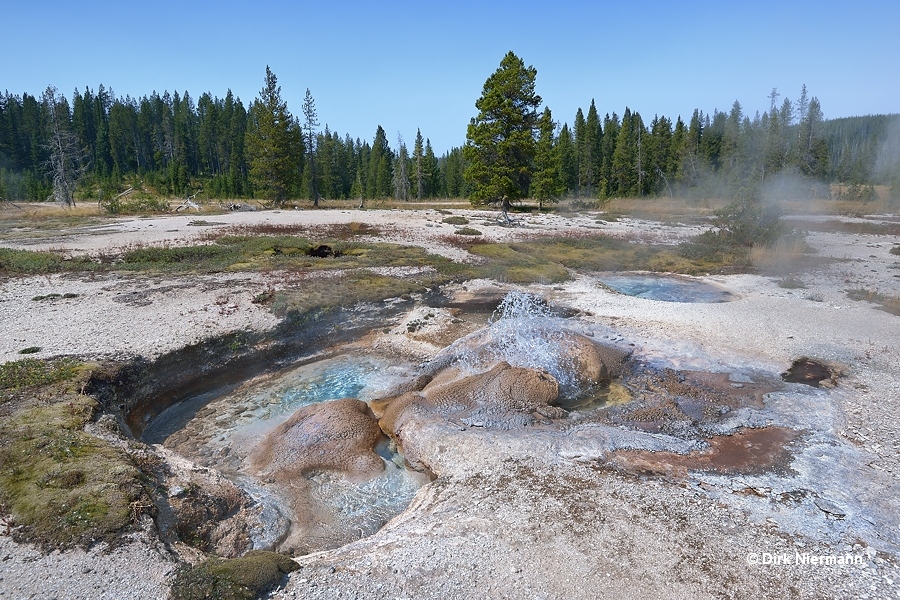
There are a lot of further springs around, far too many to present here all. I go on focusing on the more noticeable examples, such as SNGNN016, a somewhat larger quiet pool with nice colors in the northern part of North Group.
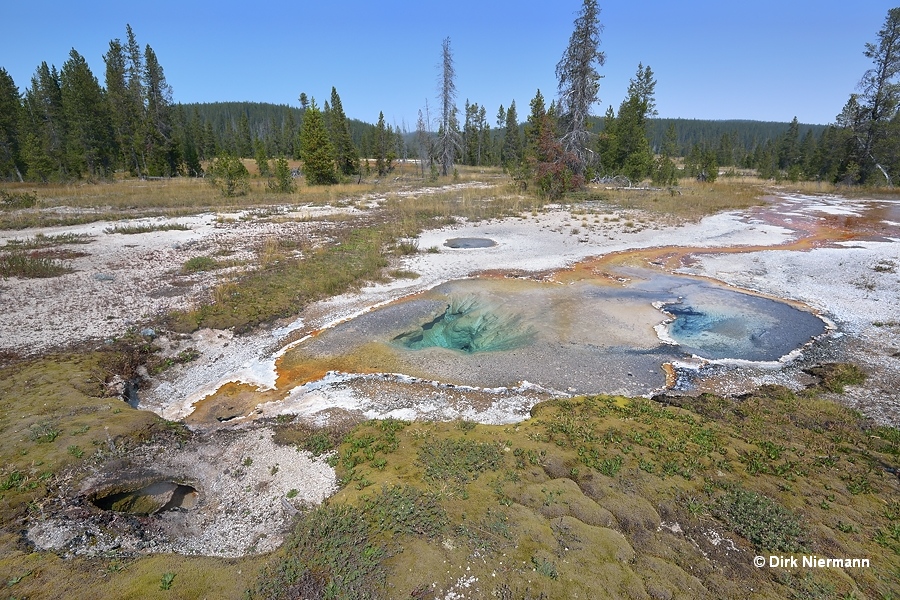
If you proceed farther north, you come across Funnel Spring and SNGNN044 next to it. These are the northernmost features of North Group. SNGNN044 was active all the time we were on location, so it is possible that it acts as a perpetual spouter.
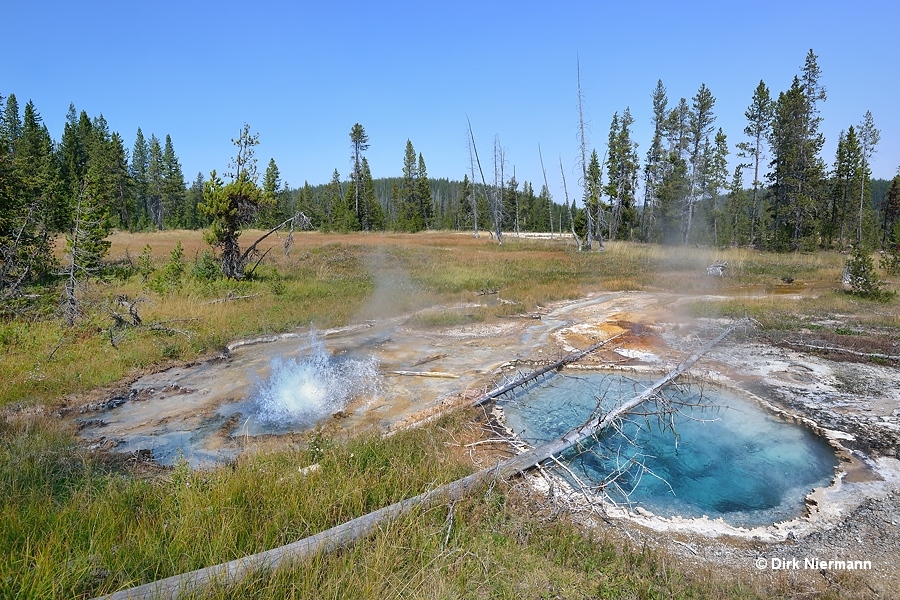
Wherever the trail through the North Group may run, the Lion Geyser cluster near Shoshone Creek is definitely not close to it. Therefore, we preferred to watch it from the east side of Shoshone Creek. Particularly suitable is a spot on the trail near White Crater Spring between Minute Man Group and Orion Group. The photos shown below are from our visit in July 2013.
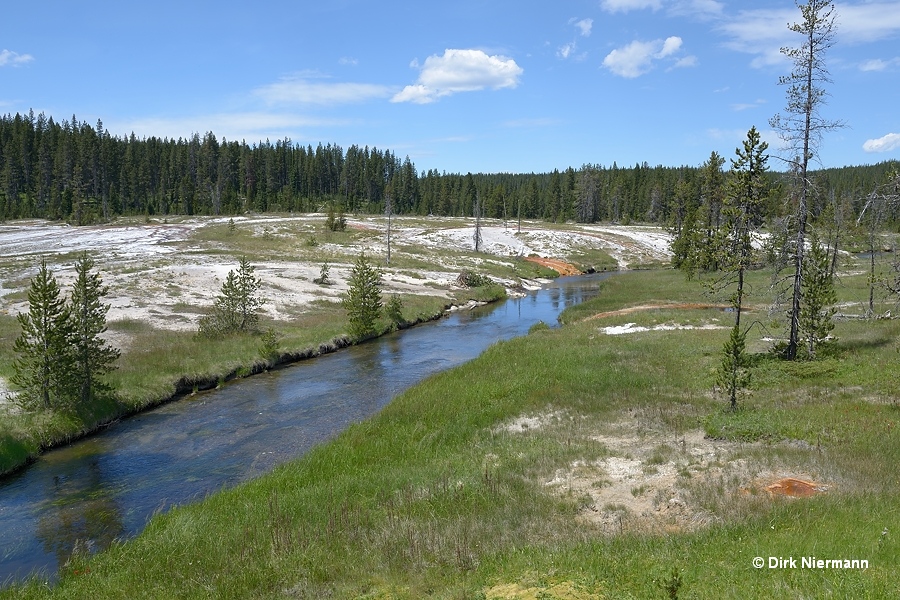
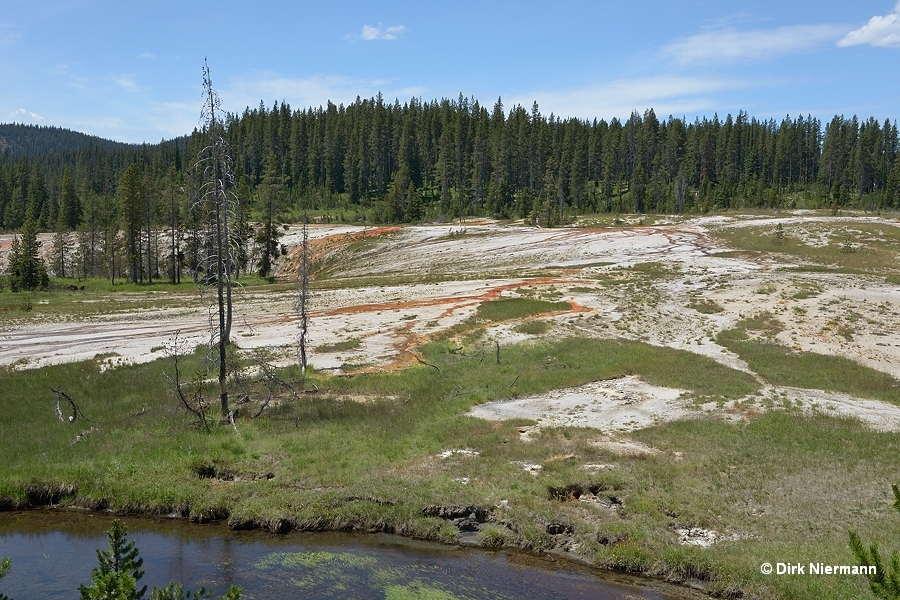
Bronze Geyser is one of the less frequent performers of the Lion Geyser cluster.
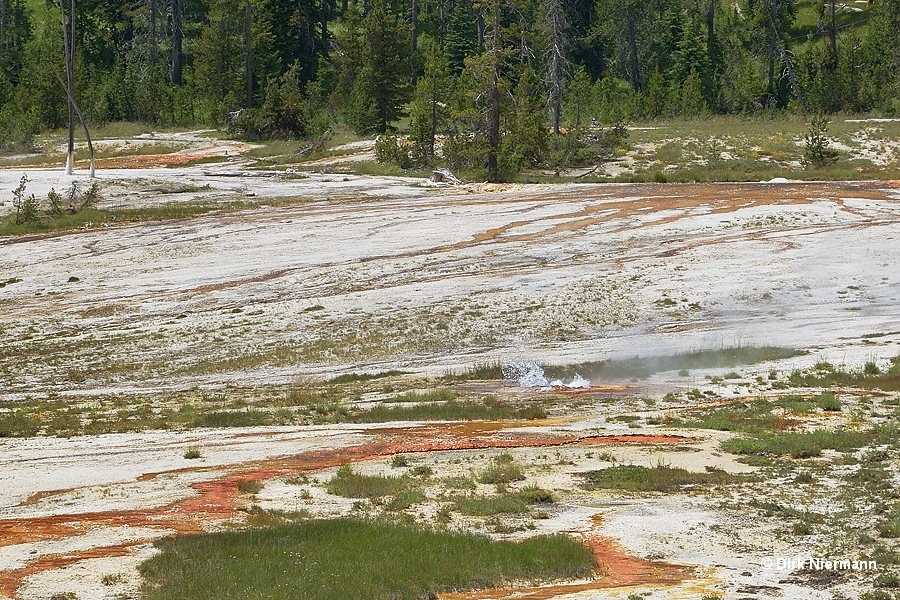
In contrast, the adjacent Iron Conch Spring erupts every 9 minutes on average. Lion Geyser, the name twin of Lion Geyser at Geyser Hill, can be seen on the far righthand side of the photo.
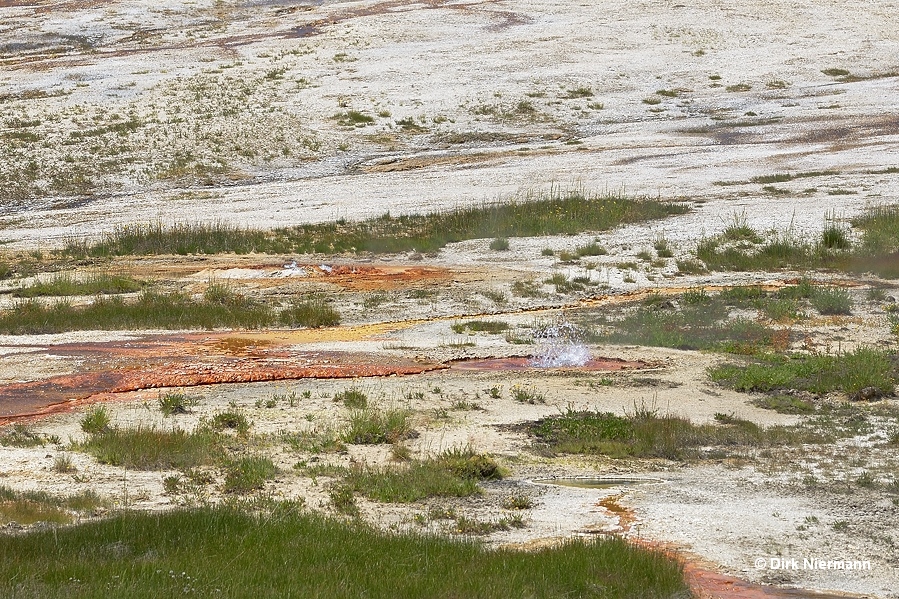
Page 1 2